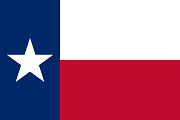
|
1
|
||
|
1 The student uses mathematical processes to acquire and demonstrate mathematical understanding.
|
||
|
Number and operations
Proportionality
Expressions, equations, and relationships
Measurement and data
Personal financial literacy
|
||
|
Number and operations
Proportionality
Expressions, equations, and relationships
Measurement and data
Personal financial literacy
|
||
|
Number and operations
Proportionality
Expressions, equations, and relationships
Measurement and data
|
||
|
Number and operations
Proportionality
Expressions, equations, and relationships
Measurement and data
|
||
|
Number and operations
Proportionality
Expressions, equations, and relationships
|
||
|
Number and operations
Proportionality
Expressions, equations, and relationships
|
||
|
Number and operations
Proportionality
Expressions, equations, and relationships
Measurement and data
|
||
|
Number and operations
Proportionality
Expressions, equations, and relationships
Measurement and data
|
||
|
Number and operations
Proportionality
Expressions, equations, and relationships
Measurement and data
|
||
|
Number and operations
Proportionality
Expressions, equations, and relationships
Measurement and data
|
||
|
Number and operations
Proportionality
Expressions, equations, and relationships
Measurement and data
Personal financial literacy
|
||
|
Number and operations
Proportionality
Expressions, equations, and relationships
Measurement and data
Personal financial literacy
|
||
|
Number and operations
Proportionality
Expressions, equations, and relationships
Measurement and data
|
||
|
Number and operations
Proportionality
Expressions, equations, and relationships
Measurement and data
|
||
|
2-3
|
||
|
2 The student applies mathematical process standards to represent and use rational numbers in a variety of forms. The student is expected to extend previous knowledge of sets and subsets using a visual representation to describe relationships between sets of rational numbers.
|
||
|
3 The student applies mathematical process standards to add, subtract, multiply, and divide while solving problems and justifying solutions.
|
||
|
Add and subtract integers
Multiply and divide integers
Operations with integers
Operations with positive decimals
Operations with positive fractions
Add and subtract rational numbers
Multiply and divide rational numbers
|
||
|
Add and subtract integers
Multiply and divide integers
Operations with integers
Operations with positive decimals
Operations with positive fractions
Add and subtract rational numbers
Multiply and divide rational numbers
|
||
|
Addition and subtraction
Multiplication and division
Mixed operations
Order of operations
Real-world problems
|
||
|
Addition and subtraction
Multiplication and division
Mixed operations
Order of operations
Real-world problems
|
||
|
||
|
||
|
4-6
|
||
|
4 The student applies mathematical process standards to represent and solve problems involving proportional relationships.
|
||
|
Interpret graphs
Identify proportional relationships
Write equations
Interpret tables
|
||
|
Interpret graphs
Identify proportional relationships
Write equations
Interpret tables
|
||
|
Ratios
Rates
Proportions
Percents
Percent increase and percent decrease
Financial literacy
|
||
|
Ratios
Rates
Proportions
Percents
Percent increase and percent decrease
Financial literacy
|
||
|
||
|
||
|
5 The student applies mathematical process standards to use geometry to describe or solve problems involving proportional relationships.
|
||
|
Scale drawings
Similar figures
|
||
|
Scale drawings
Similar figures
|
||
|
||
|
||
|
6 The student applies mathematical process standards to use probability and statistics to describe or solve problems involving proportional relationships.
|
||
|
Bar graphs
Line plots
Circle graphs
|
||
|
Bar graphs
Line plots
Circle graphs
|
||
|
Theoretical probability
Experimental probability
Compound events
|
||
|
Theoretical probability
Experimental probability
Compound events
|
||
|
||
|
||
|
7-11
|
||
|
7 The student applies mathematical process standards to represent linear relationships using multiple representations. The student is expected to represent linear relationships using verbal descriptions, tables, graphs, and equations that simplify to the form y = mx + b.
|
||
|
Independent and dependent variables
Identify proportional relationships
Write equations for proportional relationships
Write equations for linear relationships
Find values in linear relationships
Make and interpret graphs
|
||
|
8 The student applies mathematical process standards to develop geometric relationships with volume.
|
||
|
|
||
|
|
||
|
|
||
|
|
||
|
|
||
|
|
||
|
9 The student applies mathematical process standards to solve geometric problems.
|
||
|
10 The student applies mathematical process standards to use one-variable equations and inequalities to represent situations.
|
||
|
|
||
|
|
||
|
11 The student applies mathematical process standards to solve one-variable equations and inequalities.
|
||
|
Solve equations
Solve inequalities
|
||
|
Solve equations
Solve inequalities
|
||
|
Angles in triangles
Angles in quadrilaterals
Angle relationships
|
||
|
Angles in triangles
Angles in quadrilaterals
Angle relationships
|
||
|
12
|
||
|
12 The student applies mathematical process standards to use statistical representations to analyze data.
|
||
|
||
|
||
|
13
|
||
|
13 The student applies mathematical process standards to develop an economic way of thinking and problem solving useful in one's life as a knowledgeable consumer and investor.
|
||
|
|
||
|
|
||
|
|
||
|
|
||